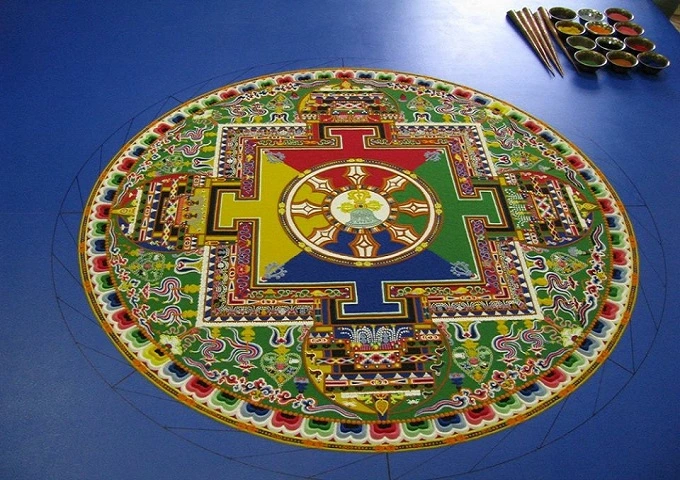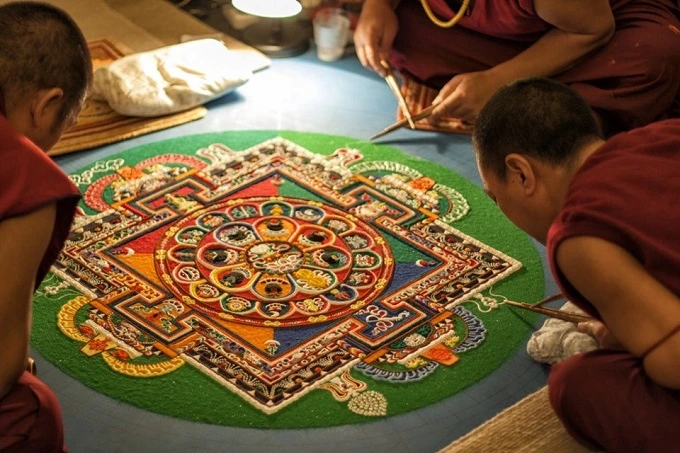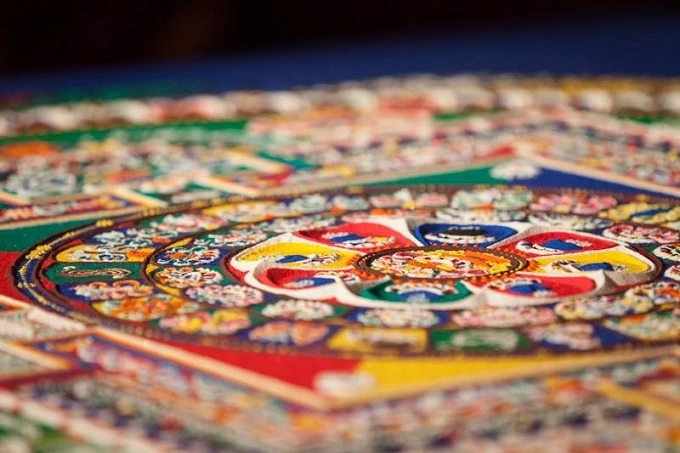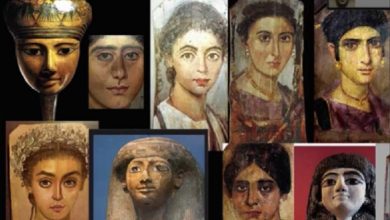A brief history of the Mandala

The Tibetan mandala literally means ‘circle’ or ‘disk’ and resembles cubist paintings to those ignorant of ancient practices. Someone may even have bought an unusual picture in his house and hung it on the wall. Meanwhile, such works of art contain the knowledge of our wise ancestors, which, however, cannot be seen with the naked eye.
If you look at the mandala superficially, you will not notice anything special except for a circle inscribed in a square, which, in turn, is also inside a circle. This is just a symbolic form in which the large circle represents the universe, the square represents the 4 cardinal points, and the inner circle represents divine power.
But if you drop deeper – enter a meditative state, fix your eyes on the center and just contemplate – the secrets of the Tibetan monks will be revealed to the consciousness. Figuratively speaking, a mandala is a kind of communication language, which cannot be comprehended only by consciousness. This requires the disclosure of one’s own inner world and the ability not to think about anything.
Tibetan knowledge was brought to the Western world by the 14th Dalai Lama, Tenzin Gyatso, who, during the offensive of communist China, immigrated with like-minded people to free India. The hospitable Hindus welcomed the fugitive neighbors with open arms and showed great interest in the Buddhist heritage.

Tibetans at first generously bestowed knowledge on those who wished to visit the new territory, and later, having secured Gyatso’s permission, they rushed to all corners of the world with exhibitions of mandalas. This was done in order to preserve the unique spiritual culture of Tibet.
Before the Chinese occupation, Tibet was a very rich country, and crushed semi-precious stones (turquoises, jaspers, malachites, pearls, corals with their bright and rich natural colors) were used to make mandalas, but now the monks have no choice but to break marble into small pieces and color the sand. It is these materials that give a similar brightness and brilliance to creations that fascinate with their beauty and mystery.
Mandalas are also drawn with paints, laid out with sand, rice, grains, they have different shapes – flat and voluminous. In particular, the process of building huge sand mandalas, which are usually worked on by several monks, is very mesmerizing. At the same time, only the largest pieces of marble are laid out by hand, while the main work is done with the help of special cone-shaped metal tubes, which are called “chakpu” in Tibetan.

This process is quite lengthy and can take up to 10 days, including a lot of rituals to cleanse the hall, worship higher energies, and directly manufacture and then destroy the creation.
Why destroy, you ask? But because the monks are interested in the very process of construction, during which they are in meditation, and not the result. Those present during this process note that the building usually has an atmosphere of calm and tranquility. The sand from the destroyed mandala has a powerful energy charge and therefore is not thrown away but is offered as an offering to the water spirits in the local river or sea.
Images of mandalas are very accessible today; therefore, it is possible to feel their effect on yourself at home. Place the picture in front of you at a distance of 30-40 cm of eyes and focus on the center. Try to drop all thoughts and just contemplate, preferably without blinking. After a while, you will notice changes in the image – it will begin to take shape, darken on the sides, or intensify in color in the center. Keep looking and noticing changes in your inner state.

Whether we regard the mandala as a breathtaking work of art or a sacred object worthy of worship, it gives us as many blessings as the smallest grains of sand go into its construction. It delivers us from illnesses, obscurations, fears, and bad thoughts.




